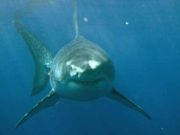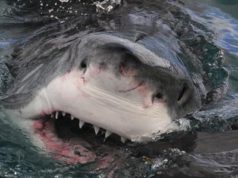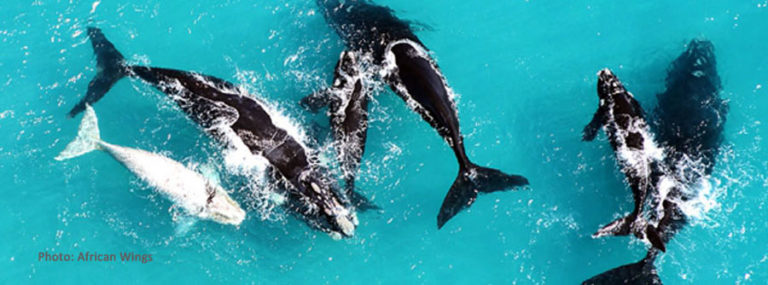 The southern right whale, Eubalaena australis, is amongst the largest of the four baleen whales that come close inshore on the southern African coast:
The southern right whale, Eubalaena australis, is amongst the largest of the four baleen whales that come close inshore on the southern African coast:
• Southern Right
• Humpback Whale
• Bryde’s Whale
• Minke Whale
They arrive along the South African coasts between May and June and their numbers peak during August, September and October. Right whales are easily distinguished from other whales by three distinct characteristics: V-shaped blow, callosities on their heads and the lack of a dorsal fin on their broad backs. The callosity on the upper jaw is referred to as the bonnet.
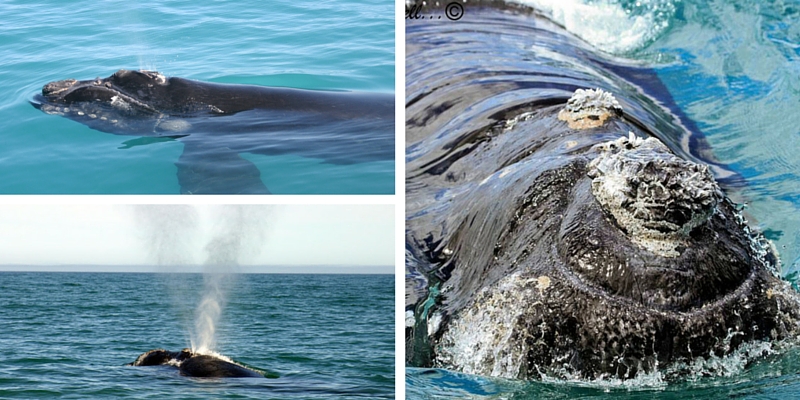
The gestation period is usually 10-12 months. The process of birth is very stressful as the little one is born directly into the cold water, causing rapid loss of body heat. The fetus is born tail first at a rapid pace to allow the newborn to surface and take in air as soon as the umbilical cord breaks. The calf will suckle on milk till they reach a size of approx 8.5m. At birth, they measure 5-6m.
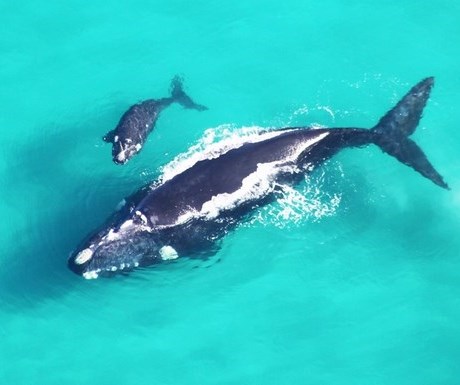
Females seek out relatively sheltered bays with gently sloping sandy bottoms for calving to enable the newborn to surface quickly. The slope and shallow waters make it easier to get the calf to the surface quickly.
It is not fully understood why female right whales produce calves less frequent than any other whales- usually one every 3 years. Another mystery is why southern right whales abandon familiar regions and establish new nursery areas.
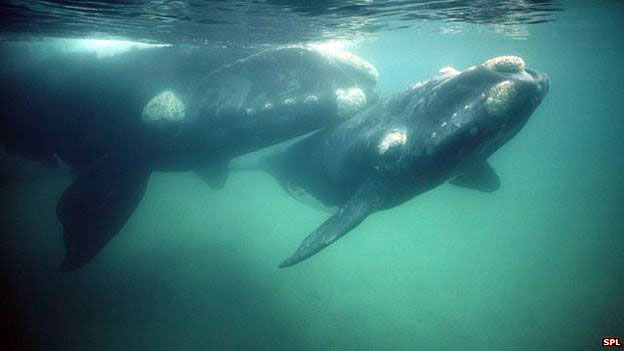 Calving is usually over a 4-month period, peaking in August.
Calving is usually over a 4-month period, peaking in August.
Mothers will protect their young-driving from intruders. The calf gets suckled underwater close to the surface- milk is ejected into the calf’s mouth. Lactation can take 4 months to 15 years depending on the type of whale. The calf will drink up to 600l litres of milk per day.
Three per cent of the calves are born white. The female will remain in our waters for 3 months, nursing until the calf is strong enough to make the long journey to the Antarctic.
- Southern Right Whales can reach a maximum length of 15-17 meters and can weigh 50 – 60 tons.
- They have broad black tails and squarish flippers.
- Their highly arched jaws make it look as though they are always smiling.
- The callosities on the jaws are wart-like bumps and are home to specialized whale lice and barnacles.
- We photo-identify Southern RightWhales by their callosities as each whale has a distinct pattern similar to our fingerprints. This data will form part of a digital database of photo-identified whales to share with cetologists and oceanographers worldwide.
- Whales will not feed for the period that they are in southern African waters. It seems likely that they migrate to about 42° South in December and January, moving further southward in February and April. The exact path taken on the journey southward to feed in Antarctic waters as well as the duration of the journey is uncertain.
We also do not know exactly where in the Antarctic they gather to feed. Most stay in the mid-Southern Ocean but some feed at the edge of the ice packs.
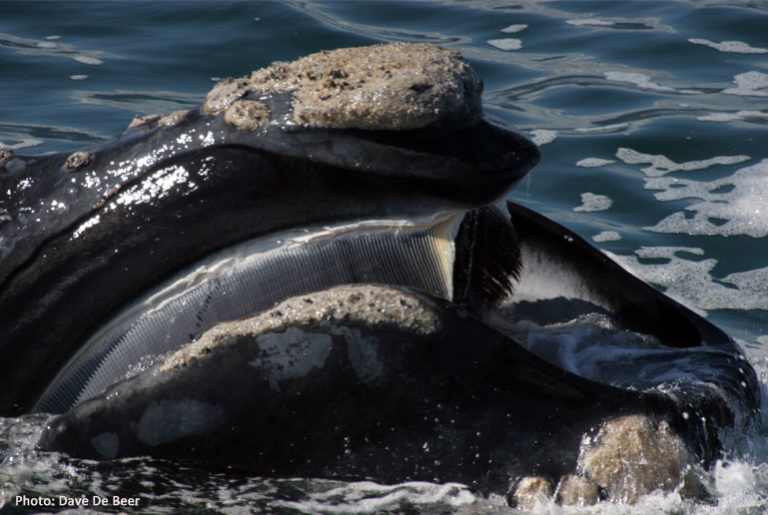
Feeding can take place at the surface or in the deep. Food is filtered out using the long baleen plates. Periodically, the mouth is closed and the food that has been collected is swallowed and the baleen is back-washed.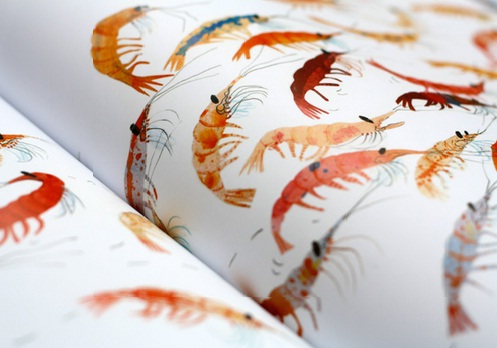
Swarms of plankton known as krill will move to the surface. Millions of individuals are in a single swarm. These swarms can stretch for miles. The whale moves slowly with its mouth open through the swarm of krill.
It can swallow hundreds of thousands in one mouthful. Each whale can swallow up to 2 tons of krill in 24 hours. In just 4 months they accumulate enough energy to last them for the rest of the whole year.
Whales are typically seen in pairs, small groups and cow-calf pairs. The bigger groups are thought to be males competing for the females. These mating groups are often associated with increased activity, with the female rolling over and slapping her flippers on the surface, trying to avoid the males.
As many as 6-10 males might be trying to mate with one female. They are not as gentle with each other as with humans and will scratch each other with their callosities, especially the bonnet.
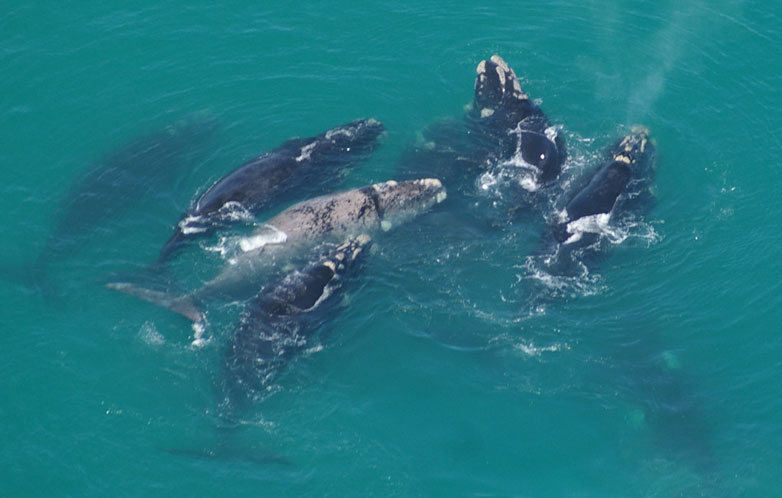
Southern Right males have the biggest testicles of all the males in the animal kingdom- weighing one metric ton!! Massive, if you compare it with the testicles of the biggest animal that has ever lived, the blue whale, whose testicles weigh only 750kg.
These enormous testicles are necessary due to sperm competition among the males as the male with the healthiest sperm will fertilize the female. The trick is to be the last one to mate with her because then your sperm will wash out your predecessors’ sperm and the last sperm will fertilize the egg.

TYPICAL SOUTHERN RIGHT WHALE BEHAVIOUR
Breaching: Jumping clear of the water, landing on the back or side with huge splash.
This behavior might be a form of communication or indication of male prowess, generally during mating. Or it might be to get rid of whale lice or maybe they do it for the pure fun of it!!
Lobtailng: Beating the surface of the water repeatedly with the tail.
It is thought to be a form of communication.
Sailing: The tail is held aloft for an extended period of time
This behavior was first observed by Dr Roger Payne who studied Right Whales in Patagonia.
He noticed that they turn their tales to get the advantage of the wind, much like a sail in the wind.
Spyhopping: The head is held aloft out of the water.
It might be that the whale is observing its surroundings as they are most curious.
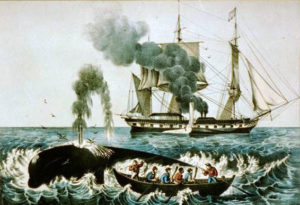
Conservation: They were named “Right Whale” because they were the “right” whale to hunt.
• They were slow swimmers
• They floated when dead
• Right whales are very curious and will approach the boat- an easy target to harpoon
• They provided a large amount of oil ( from the blubber)
Southern right Whales were granted protection in 1935. Prior to whaling, the total southern hemisphere population exceeded 300 000. Present numbers probably only 5000- 7000. We estimate that about 2000 Southern Right Whales visit South African waters each year. Our current growth rate is 7% per annum.
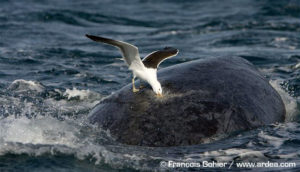
A more recent threat to whales is seagulls. They are terrifying the right whales by diving onto the whales’ backs and feeding on skin they prey loose. In one region in Peninsula Valdes as much as 35% of a whale’s day is spent fleeing gull attacks. The whales respond by increasing swimming speeds and making postural changes which allow them to keep their backs submerged. It is feared the gulls might drive the whales from optimal nursery areas and may affect survival by affecting the mother’s milk supply.
Original source:
Marine Wildlife Pocket Guide – all photos ( except seagull attack, krill &conservation) were taken in Kleinbaai and Hermanus

